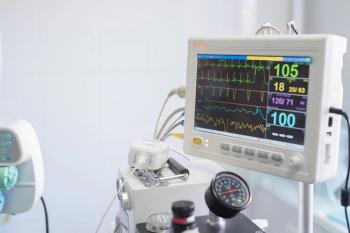
Few predictors of complications with endometriosis surgery
In the hands of a minimally invasive gynecologic surgeon, women with advanced endometriosis do not have an increased risk of complications, according to the results of a retrospective study presented month at the 46th AAGL Global Congress on Minimally Invasive Gynecology.
In the hands of a minimally invasive gynecologic surgeon, women with advanced endometriosis do not have an increased risk of complications, according to the results of a retrospective study presented this month at the 46th AAGL Global Congress on Minimally Invasive Gynecology.
The cohort consisted of 397 women who underwent conventional laparoscopic treatment for endometriosis by members of a minimally invasive gynecologic surgery division between 2009 and 2016 at Brigham and Women’s Hospital in Boston.
“This is a unique group of women,” said principal investigator Nisse Clark, MD, a clinical fellow in minimally invasive gynecologic surgery at the hospital. “Almost all were referred from outside providers and over half had what we termed ‘advanced endometriosis,’” which included American Society for Reproductive Medicine (ASRM) stage 3 or 4, deep-infiltrating or rectovaginal disease.
In addition, 41 of the 397 women (10.3%) were referred “for surgery that could not be completed elsewhere – due to dense adhesions, bowel involvement or other complexities that were beyond the skill level of the referring surgeon” Dr. Clark said.
“Patients underwent a wide variety of surgical procedures, with most requiring excision to completely treat their endometriosis. Besides excision (80.4%), other procedures were fulguration of endometriosis (38.3%), ovarian cystectomy (35.5%), hysterectomy (23.2%), salpingectomy (18.6%), oophorectomy (15.1%) and bowel resection (1.0%).
The authors compared the preoperative and intraoperative characteristics of patients who did or did not have any major perioperative complication, in order to identify characteristics that might predict the occurrence of a complication.
“If we could identify something preoperatively, that would be very useful for counseling patients,” Dr. Clark told Contemporary OB/GYN. “Unfortunately, there were no preoperative characteristics, such as age, body mass index (BMI), surgical history or imaging findings, that could predict preoperatively who might end up with a complication.”
For the development of any major perioperative complication, “we hypothesized that women with advanced endometriosis would be at an increased risk,” Dr. Clark said.
Overall, though, the study found there was no significant difference in the likelihood of a complication for patients who did or did not have advanced disease. Patients who had incomplete surgery elsewhere also did not have a higher incidence of complications. “This subset of patients had complete treatment of their endometriosis without an increased complication rate,” Dr. Clark said.
Still, the authors identified three operative predictors of major complications: lysis of adhesions, ureterolysis, and the total number of procedures performed during the surgery.
Specifically, 88.9% of women with a complication underwent adhesiolysis, as opposed to 52.5% without a complication. Likewise, 61.1% of women with a complication underwent ureterolysis compared to 28.8% without a complication.
The total number of procedures was also greater for women with a complication: 4.3 vs. 3.2.
Likewise, the operating time was longer for women who suffered a complication: 119 minutes vs. 53 minutes. Because the authors included intraoperative complications in their outcome of interest, it is not known whether the increased operative time was the cause or the effect of the complication.
The overall complication rate for all patients was 4.5%, representing both intraoperative and postoperative complications, most of which were readmission due to infection. Other rarer complications included organ injury or fistula formation. “There were no conversions to an open procedure and no cases of blood loss greater than 1liter,” Dr. Clark notes.
Dr. Clark and her colleagues were surprised that women with advanced disease did not have an increased risk of a complication. “We suspect this is a function of surgeon expertise, with all patients being operated on by high-volume, fellowship-trained, minimally invasive gynecologic surgeons,” she says. “Therefore, case complexity did not necessarily correlate with the occurrence of a complication.”
Dr. Clark says the lack of preoperative predictors of complications “parallels the challenges in assessing case complexity preoperatively. Gynecologic surgery is unique among surgical disciplines in that the surgical findings are often unpredictable, especially in the setting of endometriosis.”
Furthermore, the current study demonstrates that a few procedural characteristics might increase the likelihood of a complication. “These procedures likely increase total operative time and the amount of tissue dissection, which may be responsible for the increased complications,” Dr. Clark states.
The authors plan to survey the 41 women who had incomplete prior surgeries to determine their level of satisfaction and recovery after surgery. “We want to gain a better understanding of the value added by a minimally invasive gynecologic surgeon who operates on a patient with incomplete surgery elsewhere,” Dr. Clark says.
Disclosures: Dr. Clark reports no relevant financial disclosures.
REFERENCE
Clark NV, Dmello M, Griffith KC, Gu X, Ajao MO, Cohen SL, Einarsson JI. Perioperative Outcomes and Predictors of Complications for Laparoscopic Treatment of Endometriosis. [AAGL abstract 60]. J Minim Invasive Gynecol. 2017;24(suppl):S23.
Newsletter
Get the latest clinical updates, case studies, and expert commentary in obstetric and gynecologic care. Sign up now to stay informed.
















